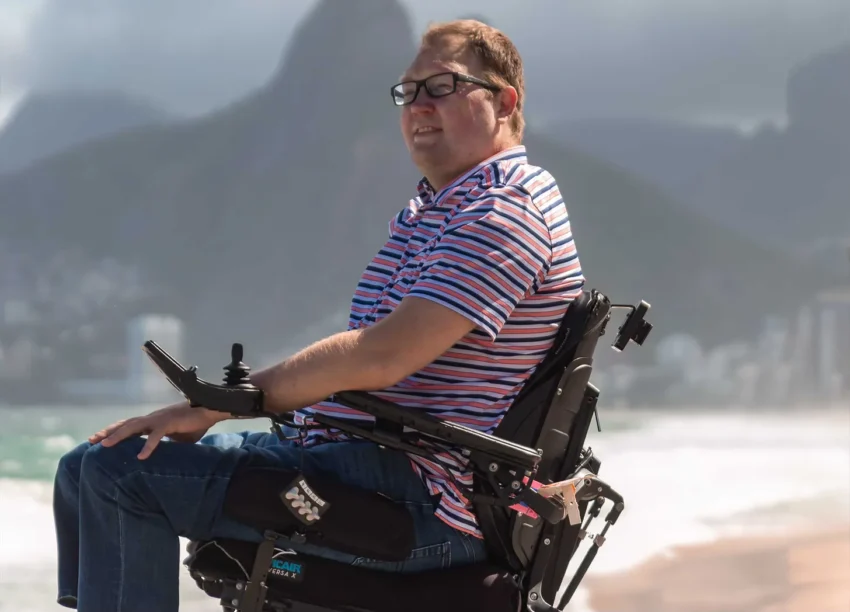Written by John Morris, WheelchairTravel.org, February 22, 2024
My uncompromising approach to accessible travel holds travel providers accountable, but it comes at a cost.
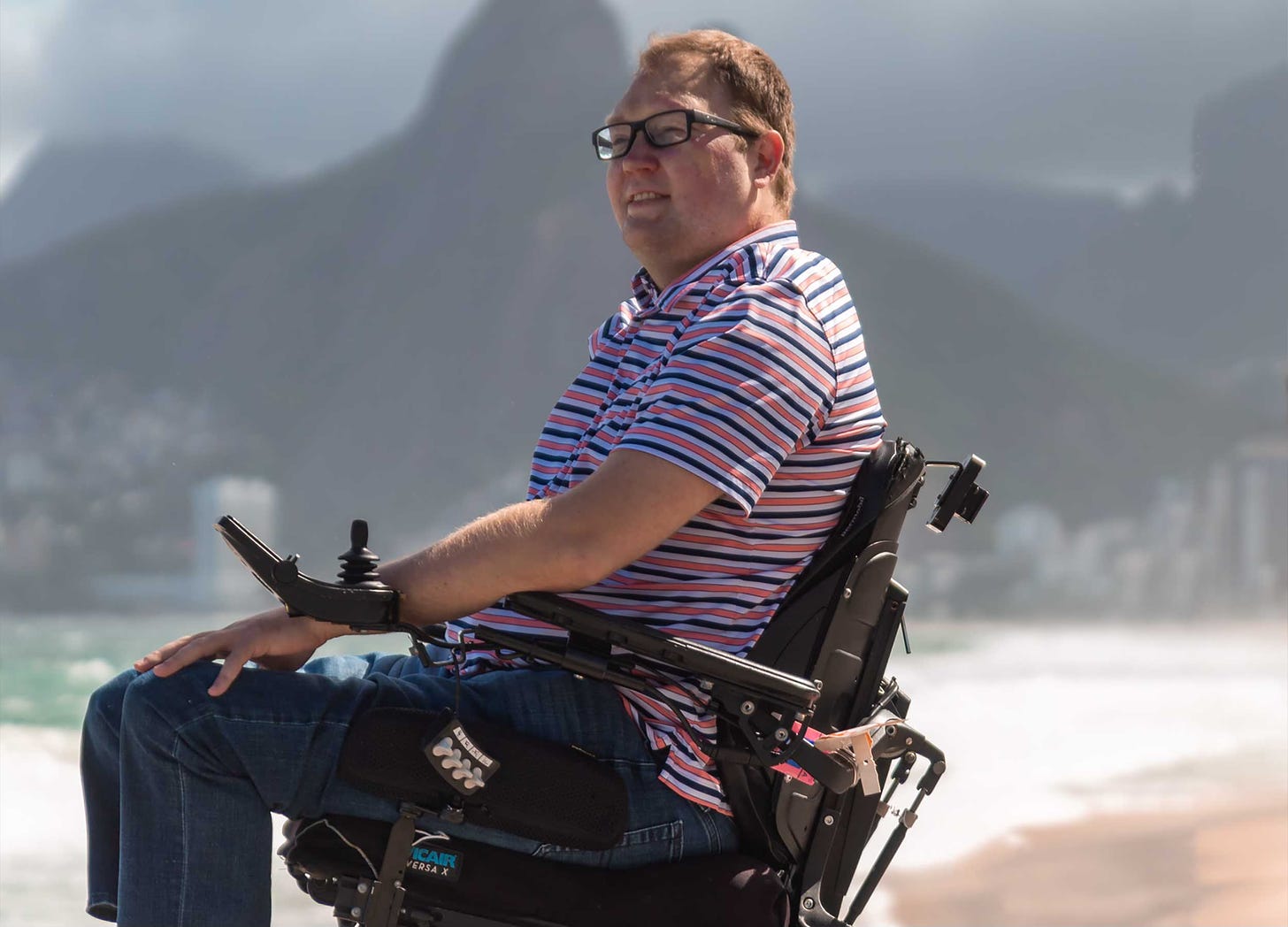
I am a triple amputee and power wheelchair user and have crisscrossed the globe more times than I can count. Plane, train, bus, boat, roller coaster, zip line, tuk-tuk, camel — you name it, I’ve ridden it. My passion is exploration and, as frustrating as traveling with a disability can be, I love just about every minute of it.
Every so often, readers share messages along the lines of “you make travel look so easy!” In some ways, it can be, and in others not. I thought I would reflect a bit on that here, in a way that I hope you will find useful.
Though I’ve flown more than a million miles and visited 50+ countries as a wheelchair user, I had a first trip as a wheelchair user too
When I planned my first trip as a wheelchair user in 2014, I had no idea what was in store — though I had been a frequent traveler my entire life, traveling with a disability is very different and I knew almost nothing about accessibility.
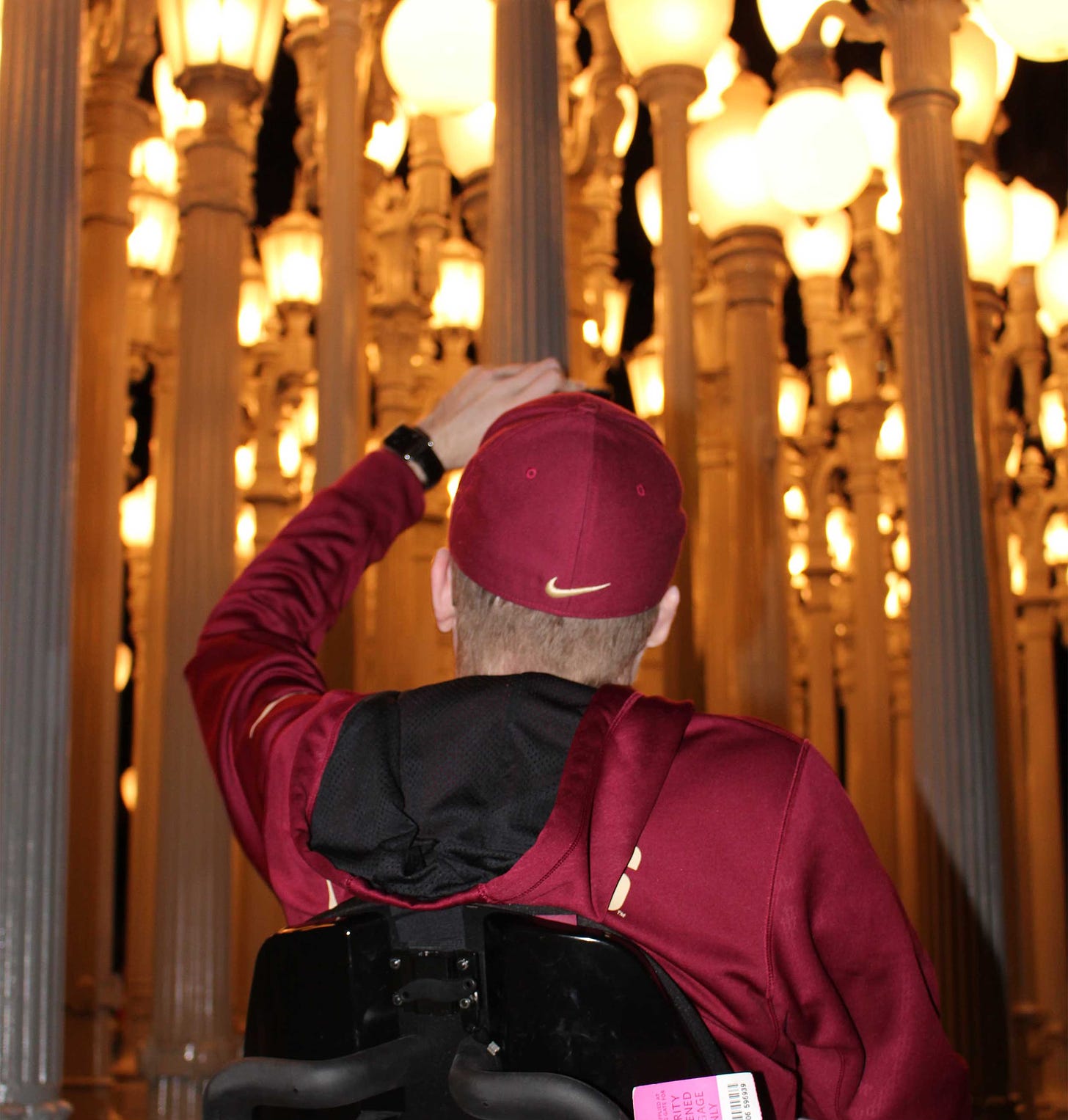
That first trip, from Florida to Los Angeles, included many of the frustrations that plague wheelchair travelers —
- After the aircraft had a mechanical failure, I was stuck in Detroit and given a hotel voucher — the hotel did not have an accessible shuttle and there were no wheelchair taxis. I spent most of the night in the airport until a room miraculously opened up at the hotel inside the airport terminal.
- My “accessible” hotel room in California wasn’t all that accessible, but I hadn’t yet learned about the ADA Design Standards for Hotel Rooms.
- After the football game I attended, no wheelchair taxis were available and I spent a couple hours making calls and wandering the streets until I found an accessible subway station.
These and other challenges that I faced on that first trip led me to start asking questions, namely “Are there any rules about accessibility,” “Where can I find accessibility information” and “Is this really the best we can do?”
Those are the questions that put me on the path to creating WheelchairTravel.org, a place to share what I was learning — through research and my own experiences as a disabled traveler.
The advantages (and disadvantages) that shape our experiences as disabled travelers
When we travel, we bring with us a unique assortment of skills, abilities and physical realities that impact the way we experience a destination. No two wheelchair users experience travel in precisely the same way, but we can nonetheless learn from the experiences of others.
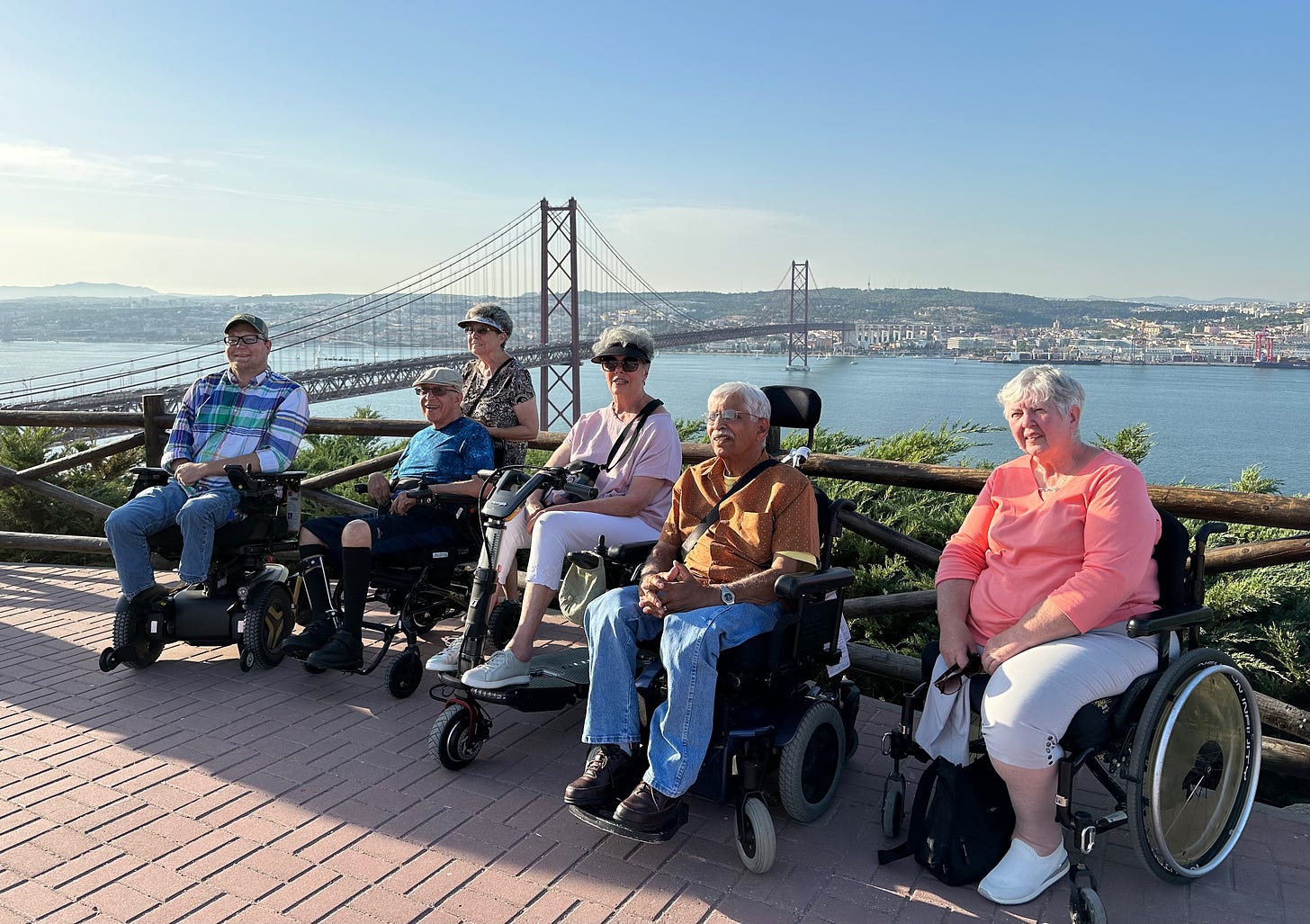
Some of the realities of my disabled life make travel easier for me than they might for you, but some also make it more challenging. Here are a couple of observations:
- I use a power wheelchair, which limits the types of ground transportation that I can take (my 400-lbs. wheelchair can only be carried in a lift- or ramp-equipped vehicle). On the flip side, the power wheelchair extends my range and makes traversing challenging sidewalks a bit easier, up to a certain limit at least.
- Seat elevation is a feature of my power wheelchair, which helps me overcome barriers like bed height. That said, I have made a point to log measurements in my reviews of hotel rooms for the benefit of others.
- My front-wheel drive power chair is able to cross larger gaps than a mid-wheel drive chair, making it easier to ride public transit in cities where there is a sizable gap between the subway train and station platform (such as New York City).
- My physical disability stems from my amputations which were the result of burn injuries and, since I am not paralyzed, it is a bit easier for me to transfer and do things like use the airplane lavatory.
- As a one-handed guy, I worry a lot about my longevity — a sprained or broken wrist would sideline me for who knows how long and, as a result, I take fewer risks than others might be willing to. That can impact my travel experience in many different ways, including in the types of adaptive activities I’m willing to try out.
- If you’re a manual wheelchair user who can pop wheelies and climb curbs when necessary, you might have a much better experience than me in some cities — my power chair is all but helpless at the sight of a 4-inch step.
When a disabled person talks about their travel experience, I try to filter the information they share through my own lens of disability. Though I’ll always be a power wheelchair user, I turn my focus to the facts when writing about accessible travel. The best way to do that, I find, is to share photos in addition to my written commentary so that you can see things for what they are, synthesize that information and decide — will this be accessible to me?
How can accessible travel be easy?
This really is the question, right? Accessible travel should be easy, but so often it isn’t. The reason for that is driven by inaccessibility, barriers that impose an extra burden on disabled travelers from the planning of a trip to our return home.
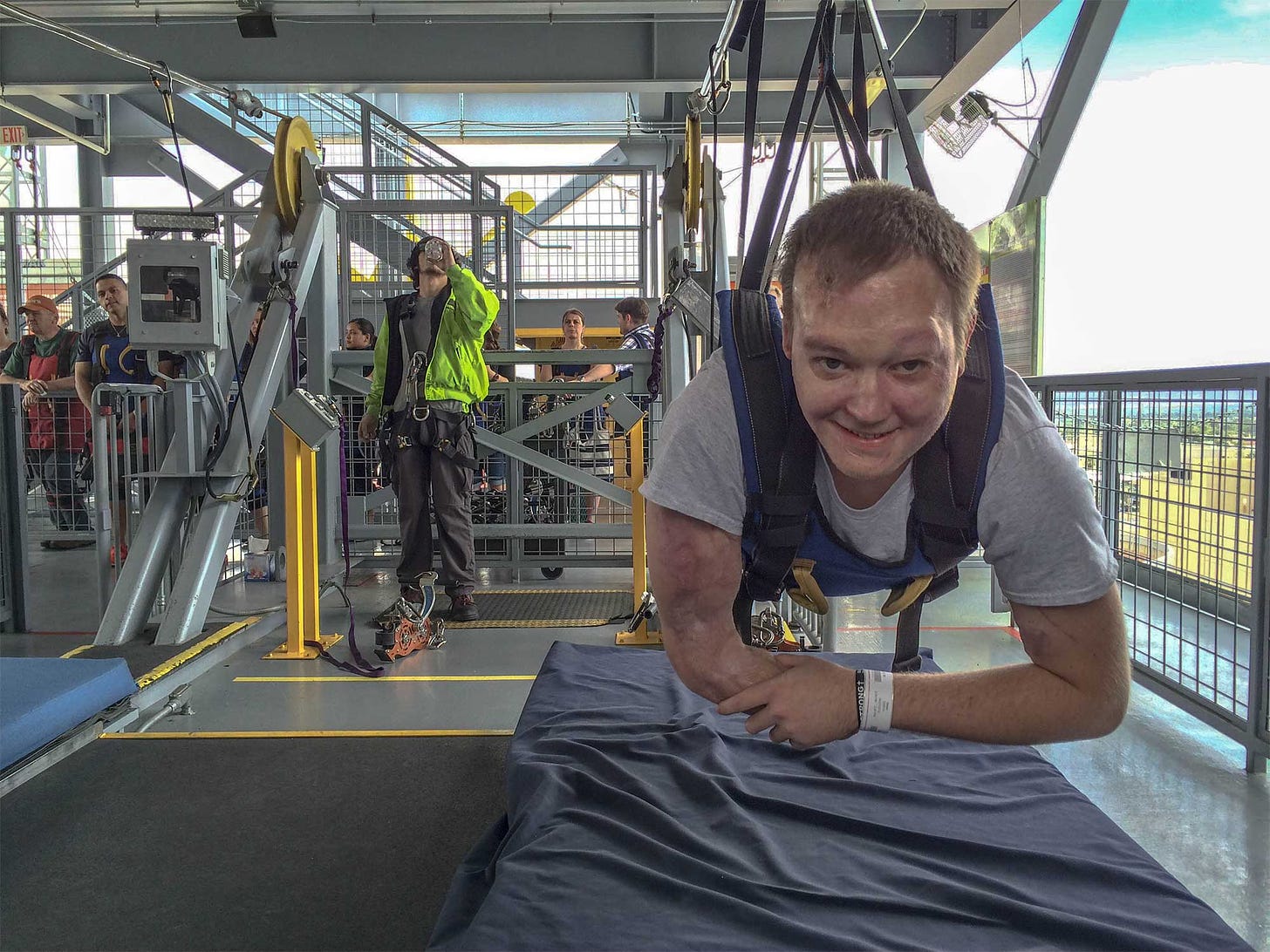
Traveling with a disability is easy when accessibility is readily available, when we set off for destinations where access is commonplace rather than the exception, and where information about accessibility is adequately disclosed.
If you’re new to traveling with a disability, check out this article: Easy Accessible Destinations for First-Time Disabled Travelers. There, I highlight five cities in the United States that are pretty easy to tackle as a wheelchair user. Don’t get me wrong, none of them are perfect — there are still challenges that you are likely to encounter, but on the whole they are cities where I am very comfortable. They’re also five cities that I visited in my first year of traveling with disability, when I was still very much a novice in accessible travel.
What makes a destination “easy?” Well, let’s look at some of the things those five cities have in common:
- Largely accessible public transportation with a comprehensive route network, including frequent train or subway service from the airport to the city center.
- Wheelchair taxis that can be ordered on demand (4 of the 5 cities on the list also have wheelchair accessible Uber or Lyft).
- A majority of tourist attractions are wheelchair accessible.
- Large selection of hotels, many of which provide ADA accessible guest rooms that meet (or come close to meeting) relevant design standards.
The first two bullet points there are focused on ground transportation and, for those of us with bulky power wheelchairs, that really is critical. No city can claim to be accessible without public transit and wheelchair taxis that visitors can rely on.
Travel isn’t always easy — I have taken a lot of trips to challenging destinations
When I launched WheelchairTravel.org, I wanted to create a resource that would fill in the information gaps that serve as barriers to making travel accessible.
That meant publishing resources that had never before existed, including the list of airplane cargo hold dimensions for wheelchair users. I still say that is the most important article on the website, but it is sadly underutilized. United Airlines is starting to provide information on cargo door sizes through their booking channels — great job, but that’s still 10 years after the data was published on WheelchairTravel.org! 😜
I also accepted the challenge of covering destinations that had not been written about before — at least not from the perspective of accessibility for wheelchair users. Comprehensive accessible travel resources for many destinations were published following those adventurous trips, including these guides:
- Wheelchair Accessible Travel Guide to Bratislava, Slovakia
- Wheelchair Accessible Travel Guide to Bogota, Colombia
- Wheelchair Accessible Travel Guide to Cairo, Egypt
- Wheelchair Accessible Travel Guide to Kuala Lumpur, Malaysia
- Wheelchair Accessible Travel Guide to Moscow, Russia
- Wheelchair Accessible Travel Guide to Rio de Janeiro, Brazil
- Wheelchair Accessible Travel Guide to Roswell, New Mexico
- Wheelchair Accessible Travel Guide to Selma, Alabama
The trips that made it possible for me to create those guides were by no means easy. I set off with very little information about accessibility and no guarantees that my plans would come to fruition. I felt like the early explorers, traveling without a map — setting off to discover new lands and unaware of the perils I might encounter. It was a thrill.
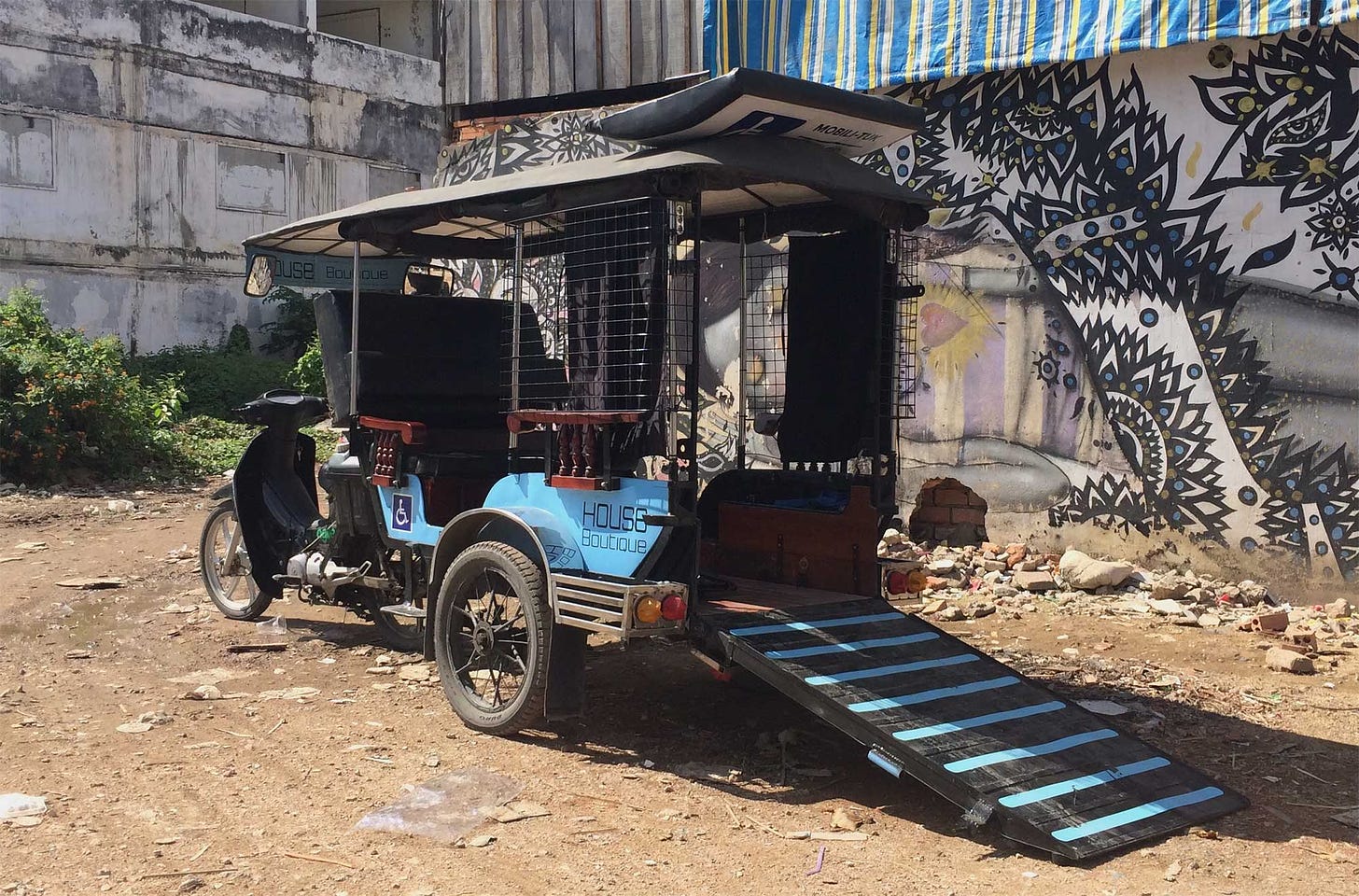
My mission is to Open Your World, and I pursue that not only by writing about the big cities that are readily accessible, but in seeking out information about the smaller and more remote destinations that appeal to the most adventurous among us.
One such city is Phnom Penh, Cambodia, which is by no means an “easy” destination to visit (it’s on the other side of the world!). Accessibility is scarce, and the trip was only possible thanks to a novel transportation solution, the Mobilituk. This wheelchair accessible tuk-tuk is a barebones mode of transit, but it unlocked a country that would have been otherwise inaccessible to me.
When I wrote about Cambodia, I had no idea if others would follow, but am happy to report that they have! That’s part of the thrill that keeps me engaged.
Do as I say, not as I do — Learn from my mistakes
WheelchairTravel.org is full of information and advice designed to make traveling with a disability easier. Here are a few tips you should always observe when planning an accessible trip or vacation:
- Research — Seek out answers to as many questions as you can before setting off on your adventure. Contact hotels directly. Read comments from other disabled travelers. Verify from multiple sources whenever possible.
- Reserve, Notify and Confirm — Notify the airline or transportation provider of your accessibility needs before travel. Reserve accessible ground transportation and book accessible accommodation well in advance. Reconfirm existing requests and reservations in the days prior to your trip.
- Develop a backup plan — Game out strategies for when things go awry. Consider the following: If your ground transportation falls through, or your flight is delayed, or your wheelchair ends up damaged, or your hotel is not as advertised, what will you do? How will you get around? Where will you sleep?
- Identify places of refuge — If the city bus or wheelchair taxi doesn’t show up, where will you go while you devise a solution? It’s important to identify places where you can seek shelter should your plans fall apart. On one occasion, when a taxi driver would not pick me up from the Grand Ole Opry in Nashville, I was able to book a room at a nearby hotel. Having identified that fallback strategy saved me from a night out in the cold.
This is an important framework for approaching accessible travel planning. But, sometimes I don’t follow my own advice.

You see, I haven’t always been a wheelchair user. I remember what travel was like before my disability… the ease of getting around, the spontaneous adventures, and the freedom to change plans at a moment’s notice.
I’m not willing to give that up, and I shouldn’t have to.
But, my pursuit of spontaneity as a power wheelchair user introduces a lot of unnecessary risk into the accessible travel equation. When I fail to reserve accessible transportation, I may spend hours waiting for a wheelchair taxi. When I do not take the step of verifying accessibility, I may find my hotel room unusable. When I don’t prepare a backup plan, I may be left scrambling to find an alternate arrangement.
A certain degree of stubbornness has been wired into my personality from the start, but a lot comes from the first question I asked as a disabled traveler, “Are there any rules about accessibility?”
As it turns out, there are. Rules that govern accessibility in air travel, ground transportation, hotels, restaurants, sidewalks — there are rules for accessibility in just about every public place, at least in the United States.
Were it not for the widespread noncompliance with accessibility regulations, this world and country would be a much more accessible place. If we flipped the script and fostered a business culture of ADA compliance, disabled people could be fearlessly spontaneous. We desperately need Equal Access Everywhere to live up to our promise of equal opportunity under the law.
So, why don’t I follow my own advice? Simply, to test the system. To reveal the inequity that exists, and to use my frustration, inconvenience and occasional pain to advocate for improved accessibility.
By pushing the boundaries of possibility and choosing spontaneous, self-guided adventures over curated tours, I gain the knowledge and experience to guide readers like you — to say, this is how things really are. Follow my tips and advice, and you can make your travel more accessible through research and advanced planning.
One final point
It should not be surprising to hear that I am a much more confident traveler today than I was 10 years ago. Traveling with a wheelchair for more than a decade, oftentimes for weeks and months on end, has given me a base of knowledge and experience that make me comfortable in facing the unexpected.
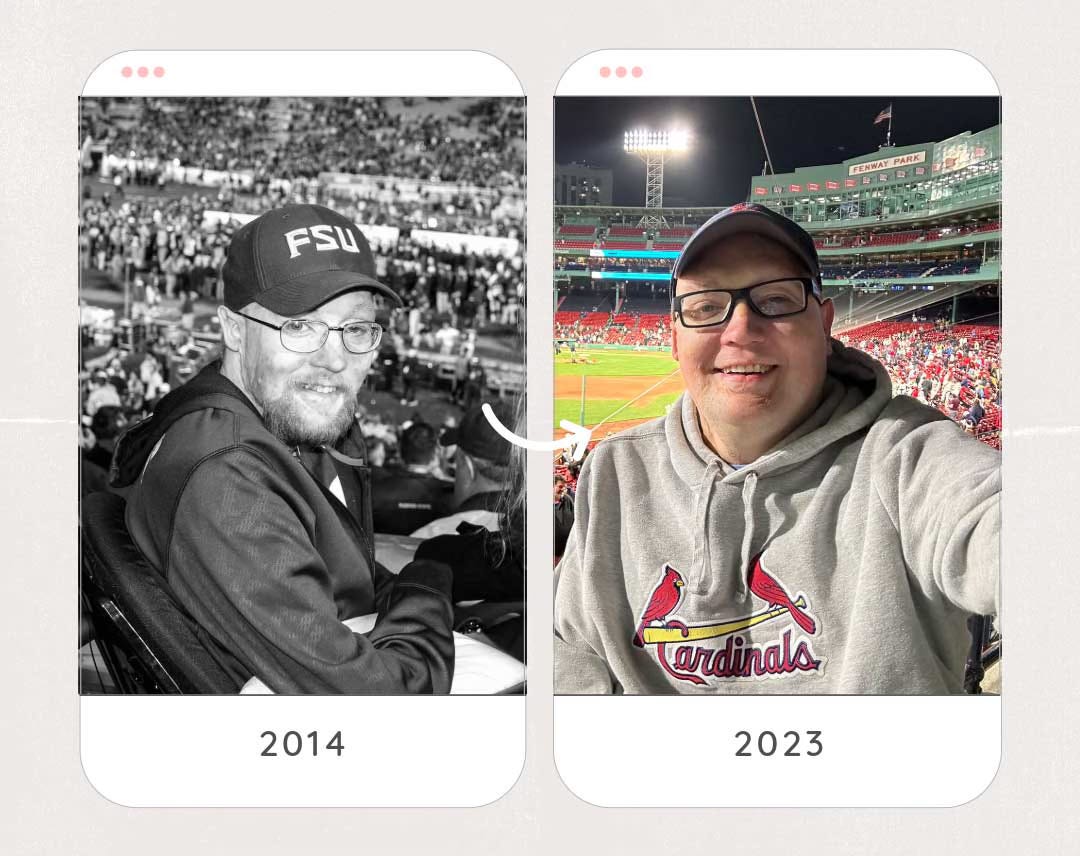
“Practice makes perfect” is a popular phrase, but I think the proper understanding would be “practice makes one competent and capable.” Seeking out perfection is a worthless pursuit — perfection is unattainable and its pursuit leaves us disappointed and incapable, unable to adapt to the chaos that is our human experience.
There will never be perfect accessibility and barriers will continue to get in the way, but with each trip you take, you’ll gain valuable knowledge that will help ease the way on subsequent adventures.
That’s my secret: traveling frequently has pushed me to chart the boundaries of my own ability, given me the confidence to face the unknown, and made me a problem solver in the face of adversity. Keep calm, carry on and travel more — I am confident you will find that too.
